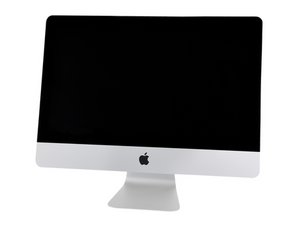Trying to replace the Blade SSD
Hey guys,
Have an iMac 21.5 (early 2017). Unfortunately, the built-in pci-SSD broke. have now ordered and installed an owc Auro Pro X2. Everything according to iFixit instructions. Has everything worked perfectly until then. Unfortunately the utility does not recognize the new SSD as a target volume. What can I do? Does this have to do with the firmware from apple?
Before the defect macOS 10.13 (high sierra) was installed. So according to notes from OWC current enough to install the new SSD for the host computer to recognize it.
Thanks a lot
Manu
Hey guys,
Habe einen iMac 21.5 (neuwertig im Jahr 2017). Leider ist die eingebaute pci-SSD kaputt gegangen. habe nun eine owc Auro Pro X2 bestellt und eingebaut. Alles gemäss iFixit-Anleitung. Hat bis da alles perfekt geklappt. Leider erkennt das Dienstprogramm die neue SSD als Zielvolume nicht. Was kann ich tun? Hat das mit der Firmware von apple zu tun?
Vor dem Defekt war macOS 10.13 (high sierra) installiert. Also gemäss Anmerkungen von OWC aktuell genug für den Einbau der neuen SSD, damit der Host-Computer diese erkennt.
Thanks a lot Hey guys,
Habe einen iMac 21.5 (neuwertig im Jahr 2017). Leider ist die eingebaute pci-SSD kaputt gegangen. habe nun eine owc Auro Pro X2 bestellt und eingebaut. Alles gemäss iFixit-Anleitung. Hat bis da alles perfekt geklappt. Leider erkennt das Dienstprogramm die neue SSD als Zielvolume nicht. Was kann ich tun? Hat das mit der Firmware von apple zu tun?
Vor dem Defekt war macOS 10.13 (high sierra) installiert. Also gemäss Anmerkungen von OWC aktuell genug für den Einbau der neuen SSD, damit der Host-Computer diese erkennt.
Thanks a lot
Это хороший вопрос?

 1
1 
 329
329  971
971